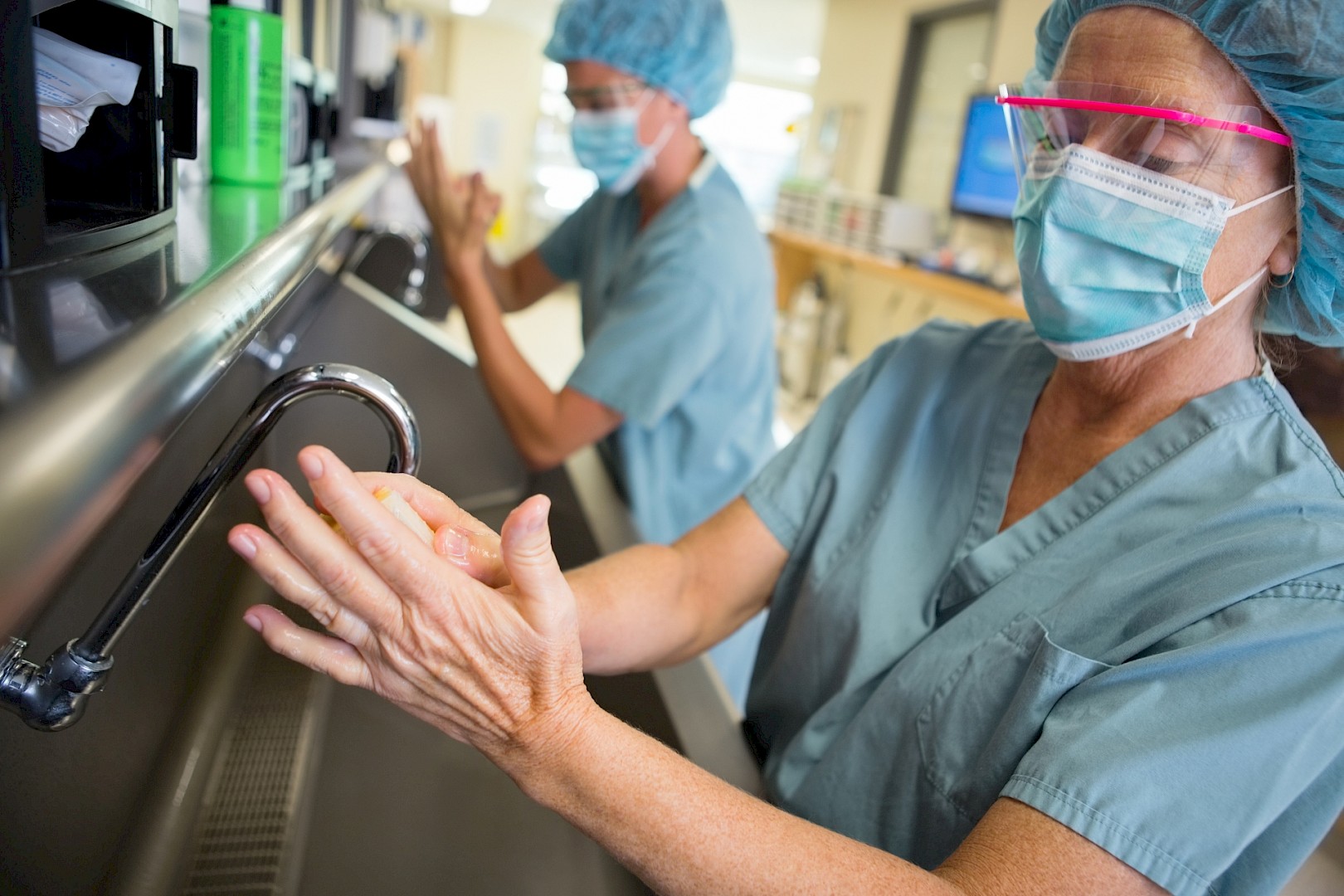
12 Feb Standard Precautions for Preventing Infections
According to the Centers for Disease Control and Prevention, “Standard Precautions combine the major features of Universal Precautions (UP) and Body Substance Isolation (BSI) and are based on the principle that all blood, body fluids, secretions, excretions except sweat, nonintact skin, and mucous membranes may contain transmissible infectious agents.”
The basic premise of standard precautions lies with the fact that we really can’t tell if someone is infectious simply by looking at them. Waiting for a definitive diagnosis and then taking care not to contaminate oneself with blood or other body fluids is akin to closing the barn door after the horse escapes! Standard precautions were instituted as a proactive stance to protect healthcare workers from infection.
We are all familiar with the recommendation and the Occupational Health and Safety Administration (OSHA) requirement to wear the appropriate personal protective equipment (PPE) such as gloves, gowns, masks, and eye protection based on the potential for exposure to blood or body fluids. However, appropriate donning and doffing is such an issue that the CDC has a website dedicated to Protecting Healthcare Personnel. A PowerPoint presentation is available on this site that explains the selection and use of PPE as well as donning and doffing, along with presenter notes on each slide.
Hand Hygiene
Hand hygiene is also an essential component of standard precautions, although it is doubtful that healthcare personnel think of this basic activity as part of standard precautions. Hand hygiene not only protects healthcare personnel but also goes a long way in preventing indirect patient to patient transmission since clean hands don’t contaminate inanimate objects that come into patient contact. Since most of us go into healthcare with the goal of helping patients to improve their health, be a proactive patient advocate and remind colleagues to clean their hands when you notice someone has forgotten to perform hand hygiene.
Cough Etiquette
The 2007 Guideline for Isolation Precautions: Preventing Transmission of Infectious Agents in Healthcare Settings added some new elements to Standard Precautions. The additional recommended practices were based on the infection control issues that were identified during outbreak investigations.
Respiratory hygiene/cough etiquette became part of standard precautions as a result of the Severe Acute Respiratory Syndrome (SARS) outbreaks. It became evident that infection control practices should be instituted at the earliest encounter, such as physician’s offices, emergency department reception and triage, and outpatient clinics. The goal is to control the source of the infection before transmission to others.
Safe Injection Practices
Safe injection practices guidance were a result of large outbreaks of HBV and hepatitis C virus (HCV) among ambulatory care facility patients. According to the CDC, outbreaks of viral hepatitis could have been avoided if basic principles of aseptic technique had been followed.
The last newly incorporated practice to the isolation guidelines is wearing a mask for lumbar puncture procedures. This came about due to a CDC investigation of eight cases of post-myelography meningitis. The cerebrospinal fluid grew out of streptococcal species that is consistent with oropharyngeal flora. This investigation, as well as others, led to the recommendation to wear a mask to prevent droplet spread of flora when placing a catheter or injecting into the spinal or epidural space.
Cleaning and Handling Patient Care Equipment
Handling and cleaning patient care equipment are probably not associated with standard precautions, although it is discussed in the isolation guidelines under that section. The goal is to prevent transmission of organisms to healthcare workers or to other patients. Contaminated or poorly cleaned patient care equipment can transmit organisms to patients, either through direct contact or indirect contact during care. Healthcare personnel should always handle contaminated patient care equipment in a manner that avoids contamination of themselves, the environment, or others. Perform hand hygiene immediately after glove removal or disposition of the equipment.
Sharps Handling
Proper sharps handling is also discussed in the Isolation Guidelines. The CDC recommendations and OSHA Bloodborne Pathogen Standard provide consistent guidance. One key component to protect healthcare workers is not to bend, recap, or break needles. If recapping is required, a recapping device or the one-handed scoop method should be used.
Some additional resources from legitimate sites include:
- Hand Hygiene in Healthcare Settings, which provides information to healthcare providers as well as patients. Additionally, this site contains some education courses which may be helpful during a hand hygiene campaign,
- Respiratory Hygiene/Cough Etiquette in Healthcare Settings offers visual alerts, basic information, an explanation of masking, and the separation of persons with respiratory symptoms and droplet precautions. The U. S. Department of Veterans Affairs also offers posters free of charge that can be reproduced.
- The Henry the Hand Foundation provides educational resources and information for early childhood, pre-school, classrooms, schools, home, and hospitals that cover a range of topics including hand hygiene and respiratory etiquette.
- The Accreditation Association for Ambulatory Care (AAAHC) published an issue of Connection that focuses on safe injection practices. This publication includes information about what surveyors look for related to safe injection practices. However, remember the surveyor information is specific to AAAHC and other accrediting agencies may have a different perspective.
- Webinars in a variety of topics, including safe injection practices and hand hygiene. Each webinar or slide set focuses on a specific healthcare setting, including Oncology Clinics, Maternal and Child health settings, and some nurse-focused webinars.
- The CDC Guideline for Disinfection and Sterilization in Healthcare Facilities offers sound advice for patient care equipment and environmental surfaces.
Although Standard Precautions have been (or should have been) part of the repertoire for every healthcare provider for the last 30 years, some aspects such as hand hygiene and safe injection practices are still ‘works in progress’. Unfortunately, patients bear the brunt for healthcare’s slow adoption of evidence-based practices.
